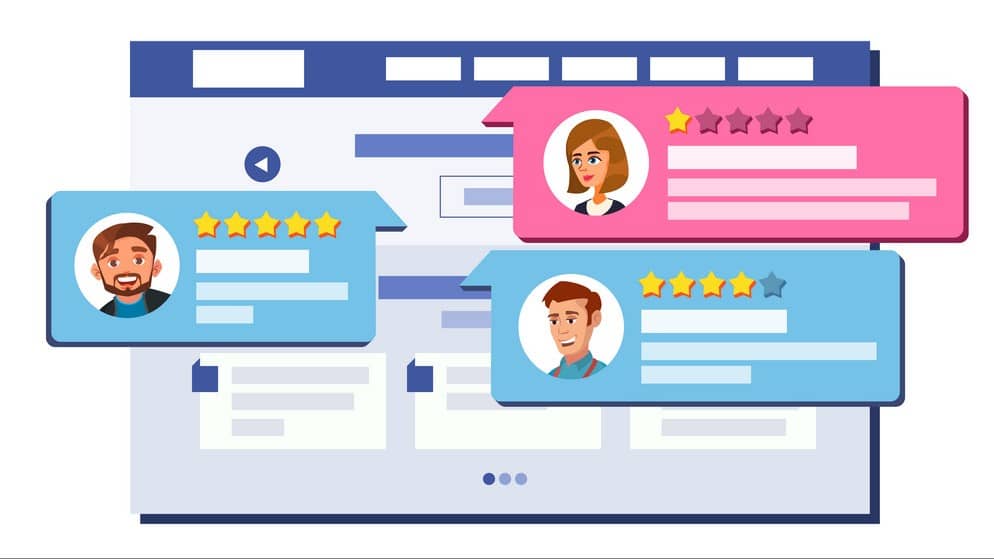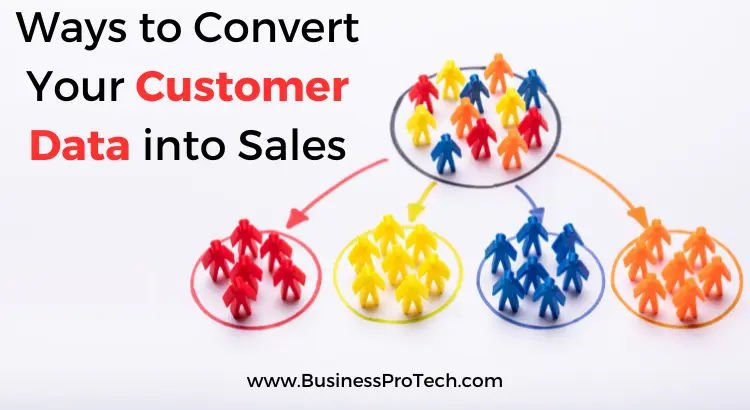As a result of digitalization, customer data is at the tip of your fingers. Potential clients leave their footprints on every step through internet surfing and social media activity.
All of this valuable customer insight can streamline your business and help you boost sales. In fact, data-driven businesses are 23 times more likely to acquire new customers.
Now that we’ve established how important customer data is for marketers, you’re probably wondering how to use it to your advantage.
That said, in this article, we’ll look at five ways to convert your customer data into sales.
Let’s dive in!
Different Types of Customer Data
So basically, customer data is all the information businesses and marketing companies collect about their customers. By using your website and mobile applications, as well as filling out your surveys, customers leave a trace of their needs and want.

Let’s take a look at the four main types of customer data.
Basic Data
This includes all basic personal information about a client such as name, age, Linkedin profile, location, and gender. Additionally, it may include financial details, such as income and household annual spending.
You can use these personal insights to create a customer database, in order to group customers based on shared characteristics.
Engagement Data
This type of data shows you different ways in which customers engage with your business. Examples include email opening rates, click-through rates, website visits, likes, shares, replies to your social media posts, and user flow.
You can acquire this type of data through marketing campaigns, by watching how customers interact with your website, ads, and social media accounts.
Behavioral Data
To some extent, it’s similar to engagement data, but behavioral data focuses mostly on the direct interaction of customers with your service or product. This includes subscription details, purchase history, the value of orders, browsing devices, and usage of different features.
This data gives you a more clear picture of active and passive customers. Website analytic tools can help you gather behavioral data that you can later use to improve customer experience and satisfaction.
Attitudinal Data
Would you like to know your customers’ opinions toward your brand, product, or service?
Attitudinal data has all the necessary information. You can collect it by conducting surveys, or closely following online reviews. Public opinions of your brand matter greatly, so always take attitudinal data into consideration.

Also Read: Everything You Need To Know About Customer Exit Survey
How Customer Data Can Streamline your Business
Now that we’ve established how to acquire customer data, let’s look at some ways how you can use it and why it’s beneficial for business growth.
- Understand your audience. By knowing your audience you can understand their perspectives, and what kind of content and messages they find enticing. That way you can change your approach where needed, and get your desired results.
- Improve the onboarding process. The best way to encourage a second purchase is to make sure the first customer experience is unforgettable. That’s why it’s important to always keep your promises. The only way to achieve this is by nailing your onboarding campaigns, and ensuring they include thank you and confirmation emails, shipping information if it’s a product, pre- and post-delivery NPS, and educational content.
- Personalized online shopping experience. Personal user experience matters more than you think. In fact, around 89% of people have switched to a competitor’s website due to a bad user experience. Take a close look at your customers’ needs and expectations, and what they value most in a company, and you’ll significantly improve the way they interact with your business.
- Timely address issues. If you’re not making the most out of customer data, your potential clients might be complaining without you even knowing. The sooner you become aware of any issues, the better because that way you’ll make sure they’re timely addressed.
- Attract and retain relevant customers. Stop throwing money on ads and email campaigns that are not guaranteed to attract and retain relevant customers. Marketing campaigns are only useful when they’re aiming at targeted audiences, so try upgrading them based on your already existing top customers.
- Sales prediction. Reviewing sales data gives you insight into your best and lowest-selling stocks. That way you can keep up to date with customer trends and make better business decisions.
5 Ways to Convert your Customer Data into Sales

Sales play an efficient role in every type of business. After all, every company is fighting to increase sales. We’ve listed five ways how you can convert your customer data into sales.
Invest in Email Marketing and Paid Ads
For so many years, email has been considered the main way of communication between businesses and customers, and it’s still going strong. Emails and ads can be upgraded to perfection, to make your customers feel valued and improve the overall customer experience.
Implement the best ecommerce email marketing strategy, give a chance to paid ads, and trust me, you’ll immediately hook your potential leads. Not only that, but you can also use this strategy to nurture even leads that went cold.
Use Analytical Tools
In order to make sense of your collected data, try using analytical tools such as Google Data Studio, or Hubspot. By doing so, you can gather insight into customers’ personal details, as well as identify which content is the most engaging.
Analytical tools are the key to every business’s success. You can always rely on luck, but one thing is sure – customer data never lies. Choose your preferred analytical tool, learn how to use it, and you’ll drive sales in no time!
Convert Data to Information
By using analytical tools you can rest assured you’ll always have accurate data to back up your business decisions. All of the gathered and analyzed data can help you better identify your products and services, as well as strategies and market plans.
Now imagine what a PDF to Word converter would do, and by using your experience and knowledge convert this data into information that can help you make a decision that can consequently benefit your future sales goals.
Build your Brand Reputation
Collect as many testimonials and influencer posts as possible. Additionally, promote valuable content such as videos and blogs on your social media accounts. These can help you identify if your leads are looking at your testimonials.
Remember to always create personalized content for each persona, and the customer data will surely show positive results. Analyzing your customer behavior and attitude towards your brand will help you improve the sales decision process. If your customer data is positive, the first step towards increasing sales is finished.
Use a Data-driven Sales Approach
First and foremost, to successfully make data-driven sales decisions you have to determine your company’s vision. Only then can you continue to collect and analyze data. Before making any business decisions you have to be sure your analyzed data is accurate, and you’re not basing your decisions on false information.
If you’re in any way doubtful about your collected data, process with variance analysis. Remember to always consider the aspects of your customer data, how it can impact your future initiative, and how important it is compared to other factors.
How to Collect Customer Data
Let’s take a look at different ways to collect customer data.
- Surveys. Surveys are the best way to collect data and know it comes directly from your customers. They can be conducted over the phone, through text, or through emailing a link to a form.
- Social media. In this modern digital world, you’ll hardly find anyone who’s not active on social media. Take a close look at your followers list, along with likes and comments, and you’ll learn a lot about your audience.
- Transactional history. When a customer makes a purchase you’re immediately collecting transactional data, which includes payments, purchases, and returns.
- Web-tracking. You probably already have a functional business website, but have you started collecting customer data through it?
By doing so, you’ll gather insight into how your customers got there, how long they stayed, and what they found interesting on the page.
Use Customer Data to Boost Sales
Oftentimes, marketers take customer data for granted. However, after understanding its importance this is likely to change.
Taking everything into account, converting your customer data into sales can help you improve business decisions, and it’s not even that hard once you get the hang of it.
The internet is flooded with data, so learn how to collect the one relevant for you, and use it to your advantage to successfully boost sales!